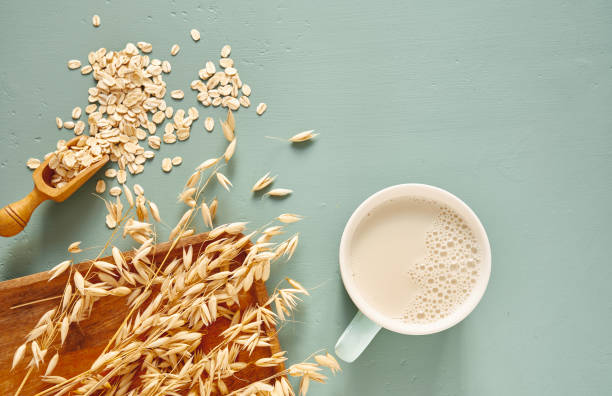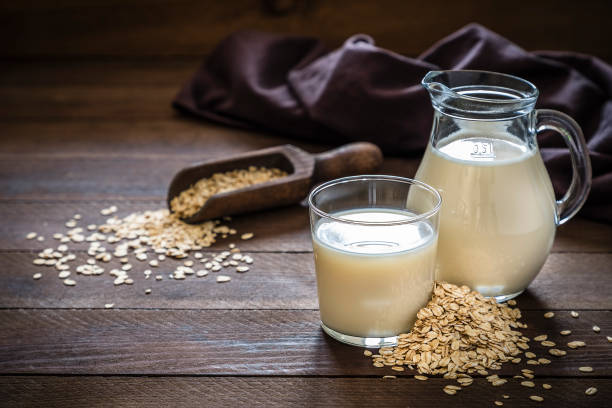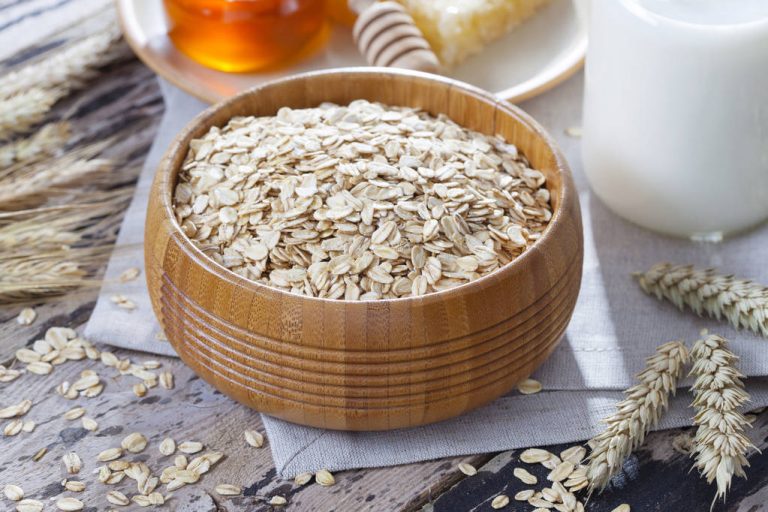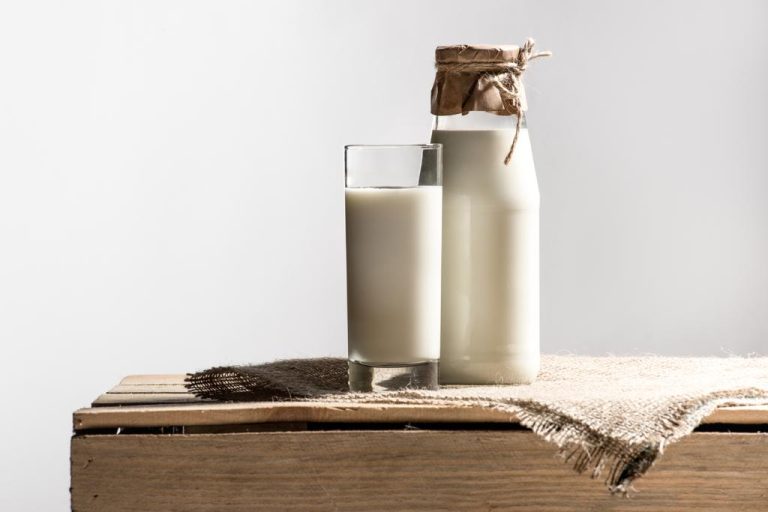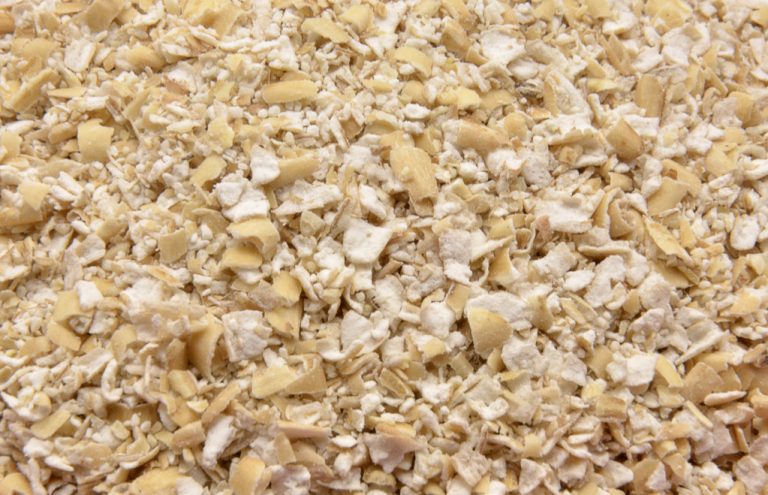The selection of milk alternatives – including oat milk in particular – on the supermarket shelves is growing all the time. But what can the milk substitute actually do and how healthy and environmentally friendly is it?

Who is oat milk for?
Since the oat drink consists mainly of oat flakes and water, it is well tolerated by many people. In contrast to cow’s milk, oat milk is lactose-free and therefore a good alternative for people with lactose intolerance.
However, the grain-based drink contains gluten and therefore cannot be drunk by people with celiac disease. Anyone who does not want to use cow’s milk in favor of animal welfare and the climate is well served with the oat drink.
Plant-based milk alternatives, including oat milk, are still significantly more expensive than cow’s milk, although the ingredients used are relatively cheap. As always, supply and demand regulate the market here: the more sales are achieved with plant-based milk alternatives, the lower the production costs and the more producers* enter the business, which is accompanied by increasing competitive pressure and falling prices. If you make oat milk yourself, it is definitely cheaper.
Oat milk is so healthy
Oat milk is naturally sweet due to the starch in the processed grain. However, they are available in both unsweetened and sweetened versions. In terms of health, it is certainly worth making sure that you grab a pack with no added sugar on the shelf.
Oatmeal, the basis for the oat drink, is very healthy. They contain many vitamins, minerals, fiber and antioxidants. Oats can also lower cholesterol levels. However, if you want to take full advantage of the health benefits, you should enjoy oatmeal unprocessed or make oat milk directly yourself, as many of these substances are lost during processing. Plant drinks also contain less saturated and more unsaturated fatty acids than cow’s milk. In general, oat milk has only little fat at one percent compared to cow’s milk. Nevertheless, there are some calories in the plant-based alternative: 100 milliliters have about 42 kilocalories.
Normally, oat drink contains hardly any calcium, which is why you can make sure to use oat milk that is fortified with calcium. Otherwise, calcium can also be absorbed through many other foods. Unlike cow’s milk, oat milk is not a source of protein. However, the necessary protein for a balanced diet can also be obtained from other sources, such as legumes, vegetables or nuts.
Make your own oat milk
If you value healthy nutrition and want to benefit from all the healthy ingredients that are otherwise partially destroyed in industrial production, you can quickly make the milk alternative yourself with just a few ingredients. As a result, it contains less sugar and tastes less sweet, as this is only produced during fermentation in industrial production. It’s also a cost-effective and environmentally friendly option. You need:
100g fine oat flakes
1l water
1 pinch of salt
optional: some sugar/dates to sweeten
First the water is boiled. The oatmeal is added to the boiling water and swells there for about an hour. Now add the salt and sweetener if desired. The mass is now pureed with the mixer, but it should not be too warm. Finally, the pulp is pressed through a cotton cloth or a fine sieve and the milk is collected in a bowl. Stored in a sealable bottle in the fridge, it will keep for up to 3 days.
Tip: Don’t throw away the leftovers! You can enjoy this in muesli.
How eco-friendly is oat milk?
One of the reasons why people are increasingly switching to plant-based alternatives is the negative environmental impact of milk production. Factory farming and industrial agriculture damage the environment and climate. Some of the climate-damaging emissions are already produced in the cow’s digestive system, but feed production also makes a large contribution. Rain forests are cleared again and again for the soy that is used as feed. Only a very small part of it is used for soy milk or tofu, since the soy mostly comes from Europe.
Since oat cultivation is widespread in Europe, the question of rainforest deforestation does not arise. Not only in comparison to cow’s milk, but also in comparison to other plant-based milk alternatives, the oat drink has the best environmental balance. According to a study by the BBC, it takes around 10 liters of water to produce a glass of oat milk. According to the Water Footprint organization, however, it takes around 200 liters to produce a glass of cow’s milk. About 74 liters are needed for a glass of almond milk.
When buying oat milk, in order to save energy, you should make sure that the oats come from European production, ideally from organic farming. There is now also oat powder*, which can simply be mixed with water and thus saves the many milk packaging.
Alternatives to oat milk
Those who like variety can now choose between a number of plant-based alternatives. Besides oat milk, soy and almond milk are the best-known alternatives. Soy milk is most similar to cow’s milk in its main nutrients. With the same protein content, however, it sometimes contains fewer calories, less sugar and less fat than cow’s milk. Almond milk tastes sweet and is just as good for any food. When it comes to the environmental balance, however, almond milk should be consumed with caution.
Rice milk is a good choice for people with many allergies and intolerances. It is suitable for people with lactose intolerance, celiac disease and soy or nut allergies. It is also much more neutral in taste than other varieties. Hazelnut drink and coconut drink also bring a tasty change.
By the way: If you pay particular attention to proteins, a hemp or lupine drink* could be right for you.
Conclusion
Anyone who avoids animal products and pays attention to a healthy diet will not go wrong with oat milk.
It can be enjoyed pure and also used perfectly for cooking and baking. Because it tastes sweet by nature, additional sugar can be saved.
Another reason that speaks for oat drink is the good environmental balance. The ingredients don’t have to hide either. In order to fully benefit from the nutrients in oats, however, it is worth making the oat drink yourself.
